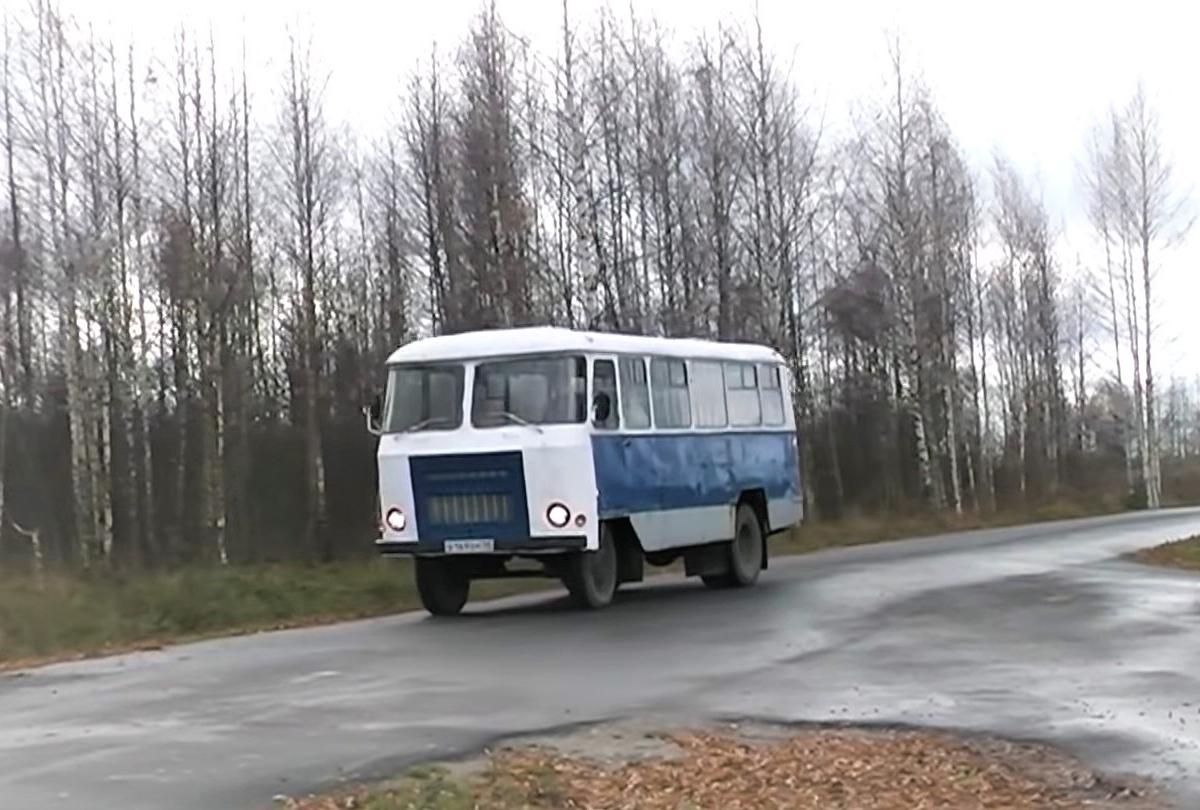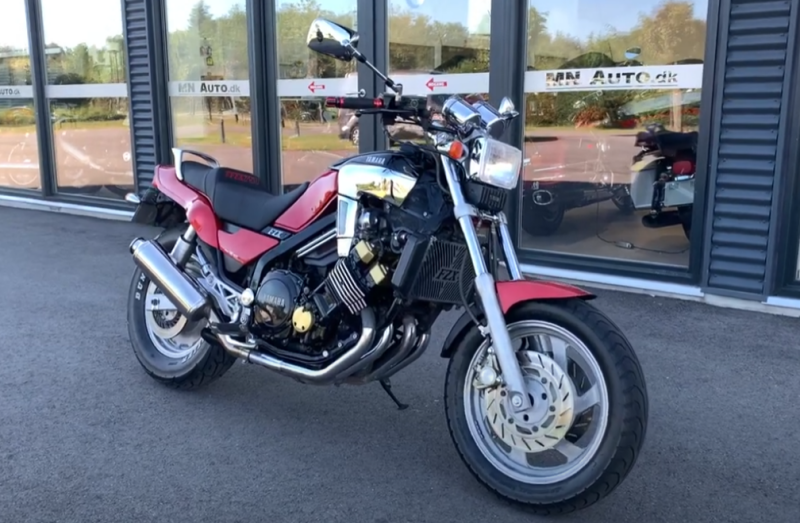Yes, the appearance and design features of the Kuban campaign bus in all seriousness could lead to such conclusions. He seemed to be something hastily cobbled together from what was, a man who was in a hurry and made everything somehow. However, let's not forget that the production of this miracle technique was carried out by an enterprise with a very appropriate name - the Krasnodar Mechanical Plant of Non-Standard Equipment. Well, something, something, but there is more than enough non-standard here.
 Sometimes there was more than one "Kuban" in the park of the enterprise. Photo: youtube.com
Sometimes there was more than one "Kuban" in the park of the enterprise. Photo: youtube.comThe story began at the dawn of the 60s. It was the time of the so-called "Khrushchev thaw". The Soviet rulers pretended to break the system and establish new relations in a country "where every person breathes freely." The Soviet people, for the most part, firmly believed in this and took an active part. But in order for the process to work throughout the territory of the entire vast country, it was necessary to revive the propaganda work.
It was also planned to promote the Soviet way of life in defiance of the resurgent Orthodoxy in the post-war country. The Soviet government also had other ideological "enemies" among the small religious groups banned in the country. To defeat them, it is necessary to work with the population of the most remote places in the country. And it must be done by activists and unpretentious equipment. It was she who became the "Kuban-62".
Culture - to the masses, to the "Kuban"!
In fairness, it should be noted that it was not only about ideological work. Indeed, considerable attention was paid to mass cultural education in the country. Even in the most seedy villages in the 60s, clubs began to appear in which films were shown for local residents. Often amateur performances, choirs, circles, even local VIA also worked here. As a result, the country received such a developed network of cultural institutions that no other country in the world could boast of.
 The windshields and mirror were similar to other models. Photo: youtube.com
The windshields and mirror were similar to other models. Photo: youtube.comHowever, to cover absolutely all the settlements of the country is an unthinkable task. Remote villages with several dozen inhabitants or youth construction sites remained the lot of work for mobile propaganda teams. And they need to come by specialized transport. So the question of creating an agit-bus stood squarely.
At that time, the Krasnodar Mechanical Plant was subordinate to the USSR Ministry of Culture. It was this enterprise that was entrusted with the creation of a new specialized propaganda bus. They chose a beautiful name with reference to the area - "Kuban".
It seems that the release of important technology was approached a little spontaneously and chaotically. Perhaps it was assumed that new trends would quickly pass and the need for such transport would disappear. Or maybe it just simply lacked technical skills and production capacity. One way or another, but the new bus turned out to be very angular, miserable and funny. But this did not at all prevent its release for three decades.
Management conflicts and the bus is not for passengers
In the understanding of any of us, a bus is a vehicle for transporting a large number of passengers. And this is absolutely true. Just not in relation to the "Kuban". It did not assume any capacity or comfort, but only the maximum compliance with a special purpose.
 The interior is just as sad as the outside. Photo: youtube.com
The interior is just as sad as the outside. Photo: youtube.comIt is quite possible that we would never have seen this eccentric on wheels if it were not for the “graters” in the highest echelons of Soviet power. As you know, the then Soviet head Nikita Khrushchev had a very strong temper. But, the head of the Ministry of Culture, Furtsev, also cannot be called a flower by nature. So "I found a scythe on a stone." Therefore, Khrushchev gave an unspoken order to "dynamite" all the requests of the Furtsev ministry in order to rein in the presumptuous lady a little.
That's just, as it always happens, had to take the rap on the ground. Having been refused the allocation of special equipment for propaganda teams, Furtseva's wards had to urgently look for an alternative. They found a quick and non-standard solution: to make a mechanical plant on the basis of ... a furniture workshop. As you already understood, all this happened in Krasnodar. Time was running out, so it was not available at all for the buildup and design searches. They took the Kaunas KAG-3 as a basis. As a result, everything turned out "cheap and cheerful":
✅ simple design
✅ wooden frame
✅ chassis from GAZ-51
✅ 30 passenger seats (23 seated)
True, given the upcoming specifics of operation, some changes were made. For example, a convenient double door, due to the lack of passenger transportation, was replaced with a single one. So the plant became the first enterprise in the Union specializing in the production of automotive propaganda equipment.
Many modifications and increased demand
The special bus that appeared, on the one hand, was technically very raw. On the other hand, the need for such equipment grew year by year. Moreover, in the direction of expanding the range as well. Such a favorable environment for the production of "Kuban" was created despite its dull appearance, technical backwardness and general wretchedness. Interestingly, over the next four years, new modified and improved modifications appeared every year, which received an index corresponding to the calendar year. They have been used as:
✅ mobile libraries
✅ reading rooms on wheels
✅ mobile museums
✅ transport for the delivery of amateur theater groups
In general, the unattractive appearance did not at all prevent the bus from carrying culture to the broad Soviet masses. Its production grew exponentially. If in the second year of production 293 special vehicles were assembled, then by 1966 production volumes approached the thousandth mark - 955 buses. Clubs and shops on wheels received the index "62A". A year later, at the exhibition from the Ministry of Culture of the RSFSR, the updated "sixty-third" was presented.
 There was also the use of special vehicles on remote routes. Photo: youtube.com
There was also the use of special vehicles on remote routes. Photo: youtube.comVery soon, the number of produced buses became higher than the needs of the Ministry of Culture. Therefore, they also began to be used as official vehicles for transporting workers from various provincial enterprises. Then - for workers of evening shifts. In the end, various research institutes brought their workers to the “Kuban” to “potatoes”. It was not uncommon for enterprising drivers to use their unprepossessing transport to "go to the field", bringing summer residents to the train or to the garden partnership.
A novelty with a metal case and the end of the Kuban era
In 1966, a completely new model was introduced, which went into production the following year. It was the first bus with an all-metal body - "Kuban-G1A". Several changes were made to its design:
✅ removed rear panoramic windows
✅ the same fate befell the rear trunk
✅ the front part received a wedge shape
✅ the last side window had a reverse slope
Despite the unpretentious appearance, the production itself, which is under the constant supervision of the Ministry of Culture, was organized very seriously. For example, there was a semi-automatic welding line and a flow conveyor. Therefore, by the end of the 70s, the level of production reached its peak - about 9000 buses per year. Many of them were not in demand in culture, so they were sold for the needs of other enterprises in the country, including agricultural ones.
 Skillful tuning can make Kuban much more attractive. Photo: youtube.com
Skillful tuning can make Kuban much more attractive. Photo: youtube.comBy the end of the 80s, the Kuban buses were thoroughly outdated, and propaganda work began to decline sharply. The company tried to save the situation by offering a completely new model "G1A1-02", which had a more modern appearance. In the same year, the total production volumes exceeded the 100 mark. But the time of the "Kuban" was inexorably approaching its end. Just a year after the collapse of the USSR, special vehicles were taken out of production. Over 30 years, 112,5 thousand Kuban buses have been produced.










